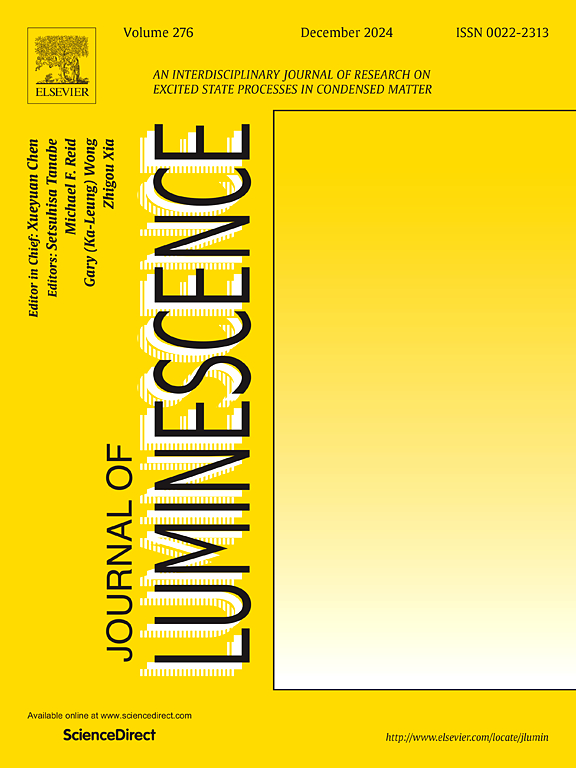Highly transparent polymethylsilsesquioxane xerogel monoliths with nanopores around 10 nm via ambient pressure drying: A potential host for nano-functional materials
IF 3.3
3区 物理与天体物理
Q2 OPTICS
引用次数: 0
Abstract
Silica aerogels are ideal templates for nanomaterial encapsulation due to high porosity and narrow pore size distribution (<10 nm) but suffer from poor mechanical strength. Polymethylsilsesquioxane (PMSQ) aerogels present better strength and transparency, yet their large pore size (10–30 nm) limits nanoparticle embedding. This study employed surface modification using hexamethyldisilazane (HMDZ) combined with ambient pressure drying (APD) to fabricate transparent, crack-free PMSQ xerogel monoliths featuring ∼10 nm nanopores, improved mechanical robustness and enhanced hydrophobicity. The effects of preparation conditions on the microstructure, transmittance, and thermal conductivity of the xerogels were systematically investigated. Furthermore, HMDZ-modified PMSQ xerogel monoliths were effectively utilized as mesoporous hosts for CsPbBr3 quantum dots (QDs). The resulting CsPbBr3 QDs@PMSQ composite monolith combined the high transparency, low density and hydrophobicity of PMSQ xerogels with the strong luminescence of QDs. The composites exhibited a PLQY of 37% along with outstanding moisture stability, photostability, and thermal stability. A white LED fabricated using the CsPbBr3 QDs@PMSQ composite monolith, red K2SiF6: Mn4+ phosphors and a blue GaN chip exhibits bright emission with CIE coordinates of (0.23, 0.24), a luminous efficiency of 100 lm/W and approximately 132% coverage of the NTSC 1931 color gamut with outstanding long-term device stability. These results highlight the potential of HMDZ-modified PMSQ xerogel monoliths as promising mesoporous hosts for nano-functional materials, especially for stabilizing perovskite QDs in optoelectronic applications.

通过环境压力干燥具有10纳米左右纳米孔的高透明聚甲基硅氧烷干凝胶单体:纳米功能材料的潜在宿主
二氧化硅气凝胶孔隙率高,孔径分布窄(10 nm),是纳米材料封装的理想模板,但机械强度较差。聚甲基硅氧烷(PMSQ)气凝胶具有更好的强度和透明度,但其大孔径(10-30 nm)限制了纳米颗粒的嵌入。本研究采用六甲基二氮杂烷(HMDZ)结合环境压力干燥(APD)进行表面改性,制备出透明、无裂纹的PMSQ干凝胶单体,具有~ 10 nm的纳米孔,提高了机械稳健性和增强了疏水性。系统地研究了制备条件对干凝胶微观结构、透光率和导热系数的影响。此外,hmdz修饰的PMSQ干凝胶单块被有效地用作CsPbBr3量子点的介孔载体。所得CsPbBr3 QDs@PMSQ复合单体结合了PMSQ干凝胶的高透明、低密度、疏水性和量子点的强发光特性。复合材料的PLQY为37%,具有优异的湿稳定性、光稳定性和热稳定性。采用CsPbBr3 QDs@PMSQ复合单片、红色K2SiF6: Mn4+荧光粉和蓝色GaN芯片制备的白光LED发光明亮,CIE坐标为(0.23,0.24),发光效率为100 lm/W, NTSC 1931色域覆盖率约为132%,具有出色的长期器件稳定性。这些结果突出了hmdz修饰的PMSQ干凝胶单体作为纳米功能材料的介孔载体的潜力,特别是在光电应用中稳定钙钛矿量子点方面。
本文章由计算机程序翻译,如有差异,请以英文原文为准。
求助全文
约1分钟内获得全文
求助全文
来源期刊

Journal of Luminescence
物理-光学
CiteScore
6.70
自引率
13.90%
发文量
850
审稿时长
3.8 months
期刊介绍:
The purpose of the Journal of Luminescence is to provide a means of communication between scientists in different disciplines who share a common interest in the electronic excited states of molecular, ionic and covalent systems, whether crystalline, amorphous, or liquid.
We invite original papers and reviews on such subjects as: exciton and polariton dynamics, dynamics of localized excited states, energy and charge transport in ordered and disordered systems, radiative and non-radiative recombination, relaxation processes, vibronic interactions in electronic excited states, photochemistry in condensed systems, excited state resonance, double resonance, spin dynamics, selective excitation spectroscopy, hole burning, coherent processes in excited states, (e.g. coherent optical transients, photon echoes, transient gratings), multiphoton processes, optical bistability, photochromism, and new techniques for the study of excited states. This list is not intended to be exhaustive. Papers in the traditional areas of optical spectroscopy (absorption, MCD, luminescence, Raman scattering) are welcome. Papers on applications (phosphors, scintillators, electro- and cathodo-luminescence, radiography, bioimaging, solar energy, energy conversion, etc.) are also welcome if they present results of scientific, rather than only technological interest. However, papers containing purely theoretical results, not related to phenomena in the excited states, as well as papers using luminescence spectroscopy to perform routine analytical chemistry or biochemistry procedures, are outside the scope of the journal. Some exceptions will be possible at the discretion of the editors.
 求助内容:
求助内容: 应助结果提醒方式:
应助结果提醒方式:


